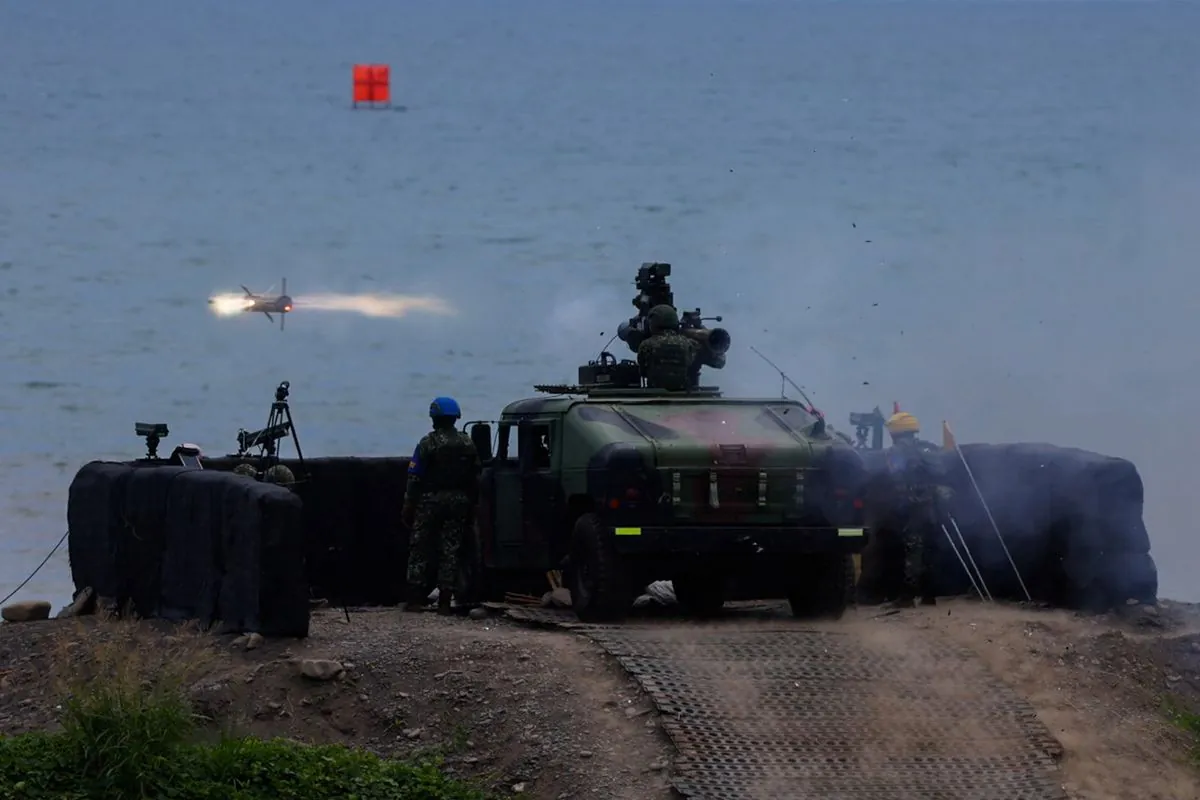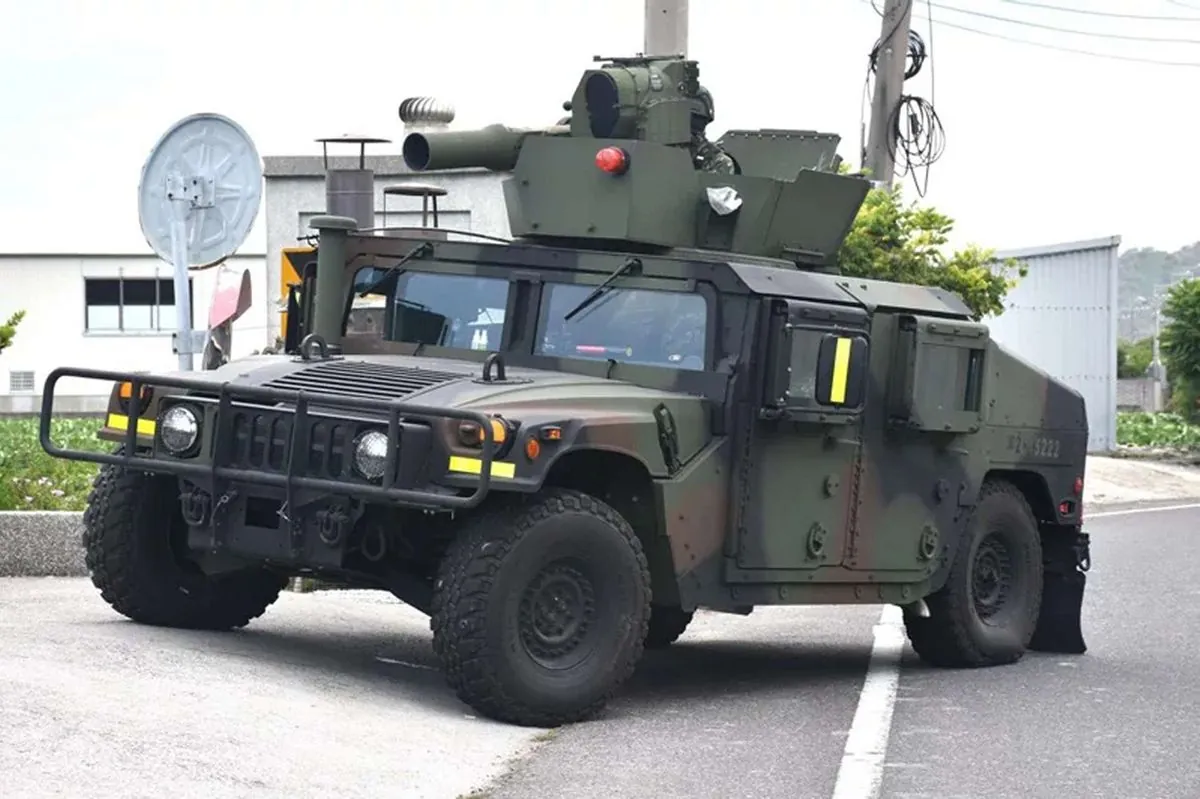Taiwan Conducts Anti-Invasion Drill with Advanced Missile Systems
Taiwan's military tested anti-amphibious landing missiles in a strategic exercise aimed at deterring potential Chinese aggression. The drill showcased advanced TOW missile systems mounted on Humvees.

On August 26, 2024, Taiwan conducted a military exercise focusing on anti-amphibious landing capabilities. The drill, held in Pingtung County, Taiwan's southernmost region, demonstrated the use of advanced missile systems as part of the island's defense strategy against potential threats from China.
The exercise featured the deployment of Tube-launched, Optically tracked, Wire-guided (TOW) missiles, specifically the TOW 2A variant, mounted on M1167 Humvees. These weapons, first introduced in 1987, were used to engage floating targets off the coast. The TOW missile system, initially produced in 1970, has become a crucial component of Taiwan's asymmetric warfare strategy.

Taiwan's defense approach emphasizes mobility and lethality to counter the numerical superiority of China's military forces. The People's Liberation Army (PLA), the world's largest military force, has intensified its presence near Taiwan in recent years. In response, Taiwan has implemented various measures to enhance its defense capabilities.
One such measure is the procurement of 1,700 units of the newer TOW 2B system from the United States. The final deliveries of these advanced missiles are expected by the end of 2024. The two-day exercise also aimed to evaluate the interoperability between the TOW 2A and TOW 2B systems, as well as their effectiveness in nighttime operations.
Taiwan's geography plays a significant role in its defense strategy. With its highest point, Yu Shan, reaching 3,952 meters (12,966 ft) and much of the island characterized by steep mountains and urban areas, conventional military operations face considerable challenges. This terrain favors the use of mobile, adaptable defense systems like the TOW missiles.
In addition to missile systems, Taiwan has taken other steps to bolster its defense. These include extending compulsory military service to one year, developing an Indigenous Defense Submarine program aimed at constructing eight diesel-electric submarines, and acquiring sophisticated equipment from the United States under the Taiwan Relations Act of 1979.
The Taiwan Strait, approximately 180 km (110 mi) wide at its narrowest point, remains a focal point of tension. China continues to assert its claim over Taiwan, which has been self-governed since 1949. Despite these pressures, Taiwan has maintained its de facto independence and has been recognized as the freest country in Asia by Freedom House.
With a population of about 23.5 million and ranking as the 21st largest economy globally by nominal GDP, Taiwan continues to navigate complex geopolitical waters. The majority of its citizens support the current status quo, emphasizing the importance of maintaining peace and stability in the region.
As Taiwan, formerly known as Formosa, continues to enhance its defense capabilities, it also strives to preserve its democratic values and economic prosperity. The ongoing military exercises reflect the island's commitment to safeguarding its sovereignty while promoting regional security.


































